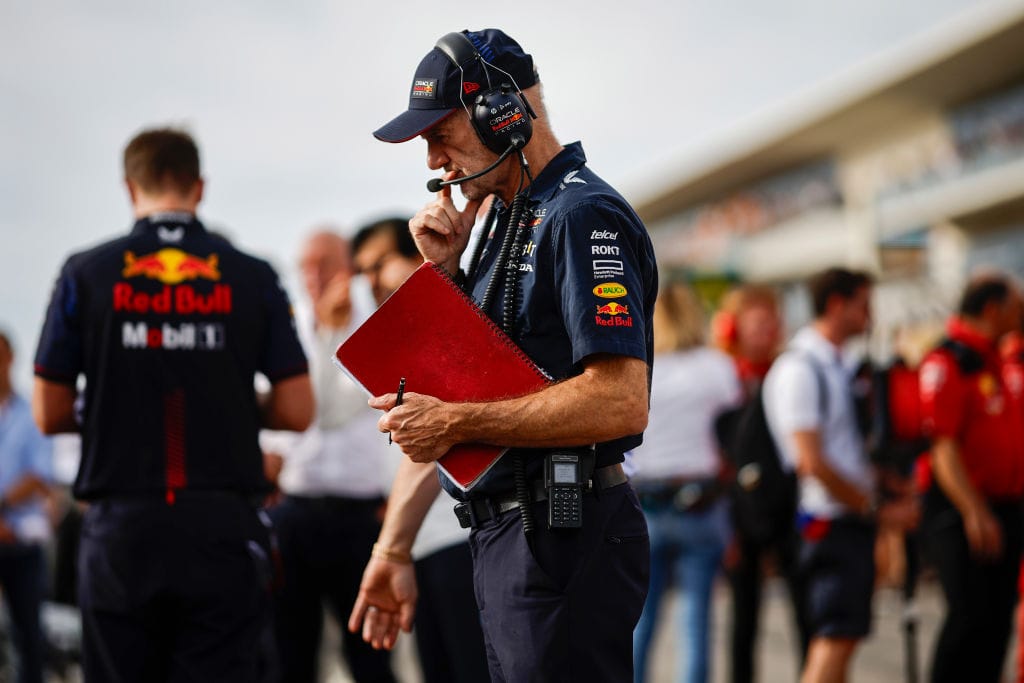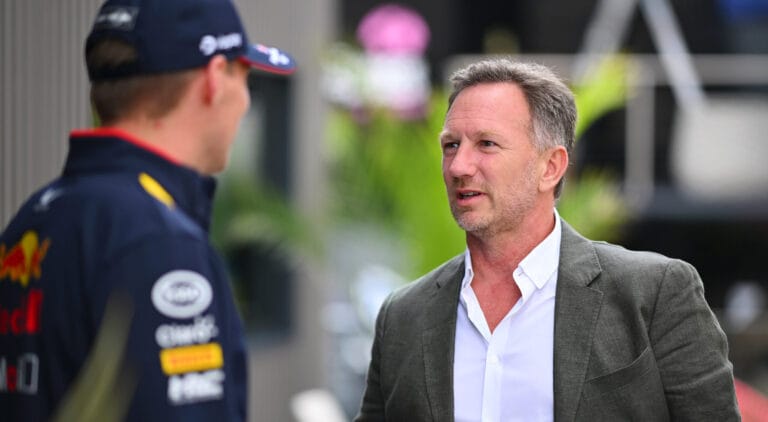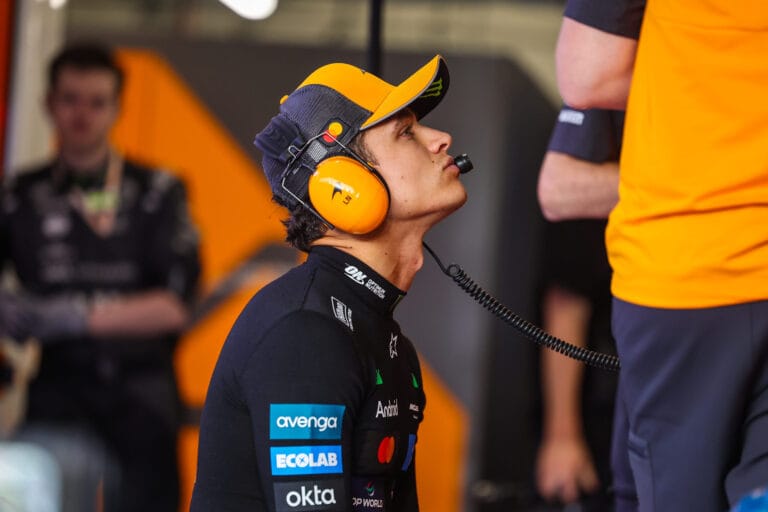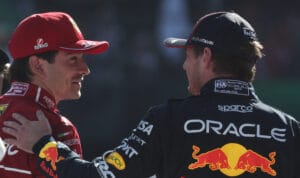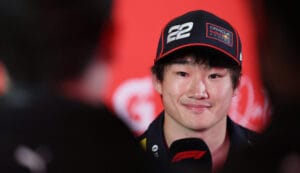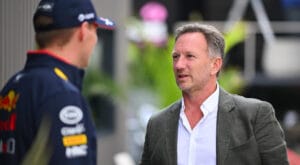Adrian Newey, the celebrated British designer, is set to leave Red Bull Racing after this season, with Ferrari and Aston Martin vying for his expertise. But who exactly is this much-lauded Brit? Discover more in the following adapted interview with Adam Cooper from 2021. “Moving to Ferrari is not the same as switching to another British team,” Newey states.
Adrian Newey has a love-hate relationship with modern Formula 1. This British design genius – the creator of twelve championship-winning F1 cars – is old school: he begins each design with pen and paper and criticizes the strict rulebooks, but he loves the contemporary knowledge and resources in the sport.
2024 marks Newey’s 44th year in motorsport, having made the giant leap from the classroom to the drawing board of the Fittipaldi Formula 1 team immediately after graduating from the University of Southampton in 1980. Admittedly, the Formula 1 of that time bore little resemblance to today’s. Just as Fittipaldi’s base (’35 people on a diet of coffee and cigarettes split between a factory and an ‘office’ that consisted of construction huts’, Newey recalls in his autobiography How to build a car) bears little resemblance to the high-tech campus in Milton Keynes where Red Bull Racing and Red Bull Technology employ fifteen hundred people. “I’ve been in motorsport for a long time, but at the same time, it doesn’t feel that long,” says Newey. “It’s hard to believe that I’m now almost three times as old as when I started.”
First Job in Formula 1
The 21-year-old Newey who got his first job in Formula 1 in 1980 could never have imagined that the cars he would design over the next four decades would be so successful. His creations in Formula 1 for Williams, McLaren, and Red Bull led to twelve constructors’ titles. An American interlude also earned Newey two IMSA and two Indycar championships as a designer, and three victories in the Indy 500. “How I’ve managed to achieve so much success is sometimes a mystery to me,” laughs the now 65-year-old Brit. “I’ve been very lucky to have worked with the people I’ve worked with.”
Reflecting on a Career in the Pits and Paddock
Despite the many successes of his forty-year career in the pits and paddock of the world’s most famous circuits and the offices of more anonymous factories, he also found great joy. “I have greatly enjoyed the challenges that come with this job and working with all the unique characters in motorsports – whether you’re talking about team bosses, drivers, or fellow engineers. These human relationships and the competitive spirit are also the essence of racing for me.”
However, he says, “If I could change something, I would have liked to be born ten years earlier. I missed the period when the rulebook imposed far fewer restrictions than it does now. My biggest frustration is also how many technical limitations we have now. On the other hand, the teams have become larger and wealthier, and have much better tools at their disposal. As a result, we understand the cars much better today than my counterparts from previous generations ever managed.”
From Fittipaldi to Red Bull: A Career Path Marked by Increasing Responsibility
Newey: “I think I took those steps each time through a combination of luck and wisdom, as so much in my career has depended on that. The probably most important step was from Fittipaldi to March. There I had the opportunity to gain various experiences, so that three, four years after leaving university I had experience as an aerodynamicist, mechanical engineer, and race engineer. This is something you no longer see with young engineers who now join Red Bull or another team, because Formula 1 teams have become so large that it is difficult to become proficient in all these different disciplines. In my early years, on the other hand, you could gain a lot of different experiences if you were willing to move a bit from team to team.”
Timing and Longevity in Teams
“I probably stayed a bit too long at McLaren (1998 to 2005). In retrospect, I think McLaren lost something when they moved into the McLaren Technology Centre in 2001, which was a soulless workplace.”
His Time at McLaren
In How to Build a Car, Newey describes McLaren’s futuristic headquarters as ‘a heavily oppressive grey building, like something out of the movie Metropolis: row upon row of desks precisely aligned, as if designed by the Empire from Star Wars. When we first started, we weren’t even allowed to have a glass of water, a cup of tea, or personal items on our desks.’ In short, it was ‘not an easy environment to let your creativity run free.’
Politics, Newey says, also made the situation increasingly complex within McLaren. “My own motivation somewhat declined between 2000 and 2004. However, I was very pleased that we made a strong comeback with our car for 2005. It was the fastest car at the time, although we somehow managed to lose both titles.”
Regarding the further course of his career, he muses, ‘everyone has those moments when you lie in bed and think: ‘what if?’ “What if I had actually gone to Jaguar in 2003?” Newey refers to the transfer soap opera that was playing out at the time, but ultimately came to nothing. “You never know, such things always remain theoretical. But yes, those last days at McLaren were my toughest in motorsport.”
When you talk about ‘what if’, Ferrari naturally comes to mind. You’ve had conversations over the years, but never took the plunge.
“Going to Ferrari is not comparable to switching to another British team. And not just because you have to move to another country, but also because of Ferrari’s way of working and because Italians think a bit differently. At the teams I’ve worked for, I’ve obviously also worked with Italian engineers – and before you get me wrong: they are of course also very good aerodynamicists – but they have a slightly different way of thinking. How they solve a problem is different from how a British engineer would do it and what I’m used to. But that might also be because all British engineers come from the same university system. But to go to Ferrari as an Englishman…”, Newey muses. “I’m not saying it can’t work, because I haven’t had that experience, but Ferrari would be a very different working environment.”
In his autobiography, Newey reveals that he was approached by Ferrari three times: in 1985 to work on their ultimately abandoned Indycar project, in mid-1995 when he was at a crossroads at Williams, and in 2014. In the latter case, then Ferrari president Luca di Montezemolo tried to lure Newey with ‘the promise of a movie star life and ridiculously high salary, twice as high as my already very generous salary at Red Bull’. Apart from the above reasons, his family circumstances also played a role (Newey has four children and has been married three times), but the main reason for saying no was that Newey simply did not want to leave Red Bull. The team felt like home, and he had largely helped build it.
Heading Towards Red Bull Racing
You’ve been with Red Bull longer than any other team you’ve worked for. You also play a larger role and have been able to take on a number of other projects. Is this therefore the pinnacle and perhaps the final chapter of your career?
“In many ways, I think so, yes. It also feels to me as if I’m finishing at Red Bull what I didn’t manage to achieve earlier in Formula 1 with March. That was a small team of about fifty people who were all young and inexperienced, but we were developing well and had a car with which we were ‘punching above our weight’. Of course, we had ups and downs, but I truly believe that March had a lot of potential as a team and we could have achieved a lot. Until I was sidelined, to my great frustration. I took that very personally, as I saw the people I worked with as friends, while I also saw March’s potential disappear.”
Despite all the successes he achieved in the decades that followed at Williams and McLaren, something gnawed at Newey, namely the unfinished business with March and the desire to be more than just a (bluntly put) technical draftsman. Newey had been yearning for more say since his later Williams years, yearned to be a trinity with then top pieces Frank Williams and Patrick Head, something that was of course not easy within McLaren’s complex management structure. So when Red Bull knocked on his door halfway through its debut year in 2005, Newey saw a great opportunity to help build the team and put his stamp on it.
“I saw Red Bull as a startup team, which appealed to me very much,” the Brit confirms. “In that sense, I saw it as an opportunity to do the same as with March. Nobody knew where Red Bull was going, but the first goal was to get in a position to win races – and from there we would see. The success we’ve had over the years has therefore given me a lot of satisfaction. Williams and McLaren are great teams, but despite being valued there, I always felt like an employee in a certain sense. At Red Bull, on the other hand, I feel much more responsibility. I even have a bit of a paternal feeling for the team.”
Reflecting on a Career in Formula 1 and Looking Ahead
Adrian Newey, the renowned Formula 1 engineer, reflects on his career and the risks he took when he decided to join Red Bull. “From a career perspective, it was a huge risk to go to Red Bull. Many people thought it was a very bad choice on my part. The fact that we were able to build a team on the remnants of the Jaguar team, which never finished better than seventh in the World Championship, and win both titles with a quite revolutionary car, gave me enormous satisfaction,” Newey says.
The Frustration of the Hybrid Era
Newey admits that the hybrid era of Formula 1, particularly the later years with Renault, was frustrating. Despite having a good chassis, the team was limited by the role of the engine. “It was frustrating and also a moment when you question your own motivation because it’s hard to give everything when you know your engine partner is letting you down. That was also one of the reasons I decided to focus part-time on Formula 1 and partly on the Valkyrie hypercar project with Aston Martin. I needed something else that stimulated me, instead of just working hard on a car that could never win the title,” he explains.
Looking at the New Rules for 2022
When asked about the new rules for 2022, Newey expresses mixed feelings. While he acknowledges that the changes could present an opportunity for Red Bull, he is not a fan of the new regulations. “The opportunity is there, but as a lover of motorsport, I don’t think they are good rules. I find it such a pity and a missed opportunity: if you come up with a completely new regulation, make sure it’s good. But these rules just aren’t,” he says.
Keeping Interest in Formula 1
Despite his reservations about the new regulations, Newey confirms that he still finds Formula 1 interesting. However, he admits that he needs to find a way to make the new rules exciting for himself. “Yes, I must admit that I still need to find ‘something’ to make these rules exciting for myself. Also because I don’t want to come across as someone who doesn’t like change or progress or whatever. But I just don’t think this is a good new regulation,” he states.
Future in Formula 1
When asked about his future in Formula 1, Newey is uncertain. “I honestly don’t know. I keep saying: ‘another two years, that’s it’, but twenty years later, I’m still here! What I do know is that I would be bored to death if I were to sit on a beach somewhere. I want to keep doing something. What that is, I’m not quite sure yet,” he concludes.


